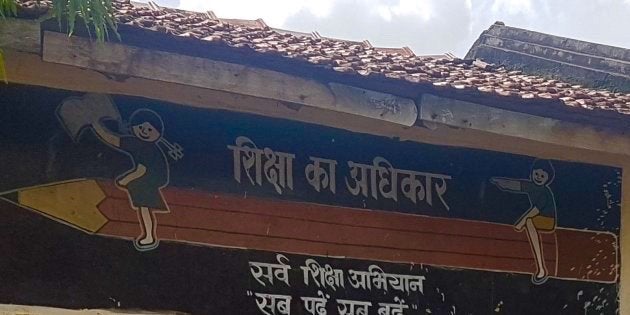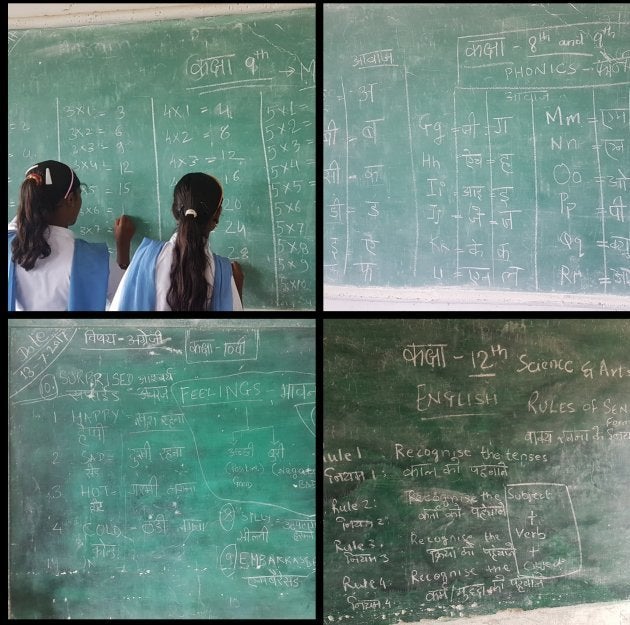
Imagine your 14-year-old, ready to prove to the world his brilliance, about to take the matriculation exam, except he is just being introduced to multiplication tables, being taught the alphabet for the first time in school. How confident would you feel about him competing with his peers and successfully passing the exams?
Yes, even Einstein's parents would have felt the same.
Now, spare a thought for Vinay, Kajal and Aanchal, who are about to take the exams from a tribal village government school in Pench (Madhya Pradesh). They will soon set out to compete with the very best, but can't handle even basic maths and English. Of course, they will most likely fail. Their only mistake is that they came to school and trusted their educators, but most of them will be made to feel personally inadequate and give up on education after this failure. According to the 2011 Census, 70% of India's population lives in rural areas. But instead of harnessing their potential, are we breeding a generation of youngsters who are afflicted by low confidence and who become non-believers in the value of education?
One of [the teachers'] top priorities was hoisting the national flag on the school premises, even on days when students didn't get a single lesson... exhibition is more important than duty.
Having lived abroad for more than decade, I have only followed the famous "growth story" of India from its periphery. While I was scaling the rungs of corporate leadership, I applauded standing on the fence every time I saw a politician take the podium and gloat about our literacy rate and the success of our Right to Education Act (RTE). This was until I spent a month with the tribal school kids in Pench as a volunteer teacher with a local NGO. My experience busted several myths I believed in about our "progressive" education system.
My disillusionment began with my first visit to a government school in Mohgaon village in Pench. The dilapidated building and that graffiti on the broken wall looked like a mockery of the "right to education." The despondent eyes of those 114 students, who came to school every day hoping to get at least one hour of their teacher's time, still haunt me.

The RTE Act states that the teacher-pupil ratio should not exceed 35:1. But the average student-teacher ratio in the school I was teaching was 100:1. On a good day the school had a maximum of four permanent teachers among 400 secondary and high school students. And even these four had more important work to do than give classes to the students. One of their top priorities was hoisting the national flag on the school premises every day, even on days when students didn't get a single lesson. Such is our sense of patriotism that exhibition is more important than duty.
I also realised a depressing truth about our soaring literacy rate. According to the 2011 Census, "Every person above the age of 7 years who can read and write with understanding in any language is said to be literate. Any formal education or minimal education is not required to be considered as literate."
Well, that explains our 74% literacy rate.
Our system is designed to put students into the schools like chicken in a poultry farm—midday meals if you are in school, bicycles if you pass 8th standard.
Our system is designed to put students into the schools like chicken in a poultry farm—midday meals if you are in school, bicycles if you pass 8th standard. What they do in the school is no one's concern. Passing exams from one grade to another, until the 8, is a farce. Post 8th grade when most of these benefits are retracted, most students drop out from school. The average dropout rate in this tribal area was around 63%. My first day in school I had to start with teaching basic multiplication tables, alphabets and verbs for 10th and 12th graders. No wonder, the passing rate for class 10 was less than 25% and that for class 12 was less than 15%. I was actually surprised that these rates were even this high.

Before we make the legendary excuse of our population's size being responsible for this sorry state of affairs, let's not forget that China's literacy rate is 95%. A clue for its success lies in the highly specific definition of literacy. A literate person is defined as anyone "over the age of 15 who can read and write more than 1500 Chinese characters (for a farmer) and 2000 characters (for an office worker or urban residents."
In Pench, I met passionate young boys and girls. One boy wanted to develop his village by becoming an IAS officer, a young girl dreamed of opening a hospital. What kind of nation are we building if such selfless passion is crushed to make policymakers look good?
So, the next time you see poor kids playing around the hand pump next to a highway dhaba, and wonder if they are just too lazy to study hard unlike your child sitting in the comfort of your air-conditioned car, think again—are the dreams of your kid and that kid by the hand pump, really that different?
In order to support Mohgaon school kids, I have started a campaign along with the local NGO, Kohka Foundation, to hire teachers and start supplementary classes that will prepare the class 9th and 10th students for their board exams. You can support the campaign through this link.